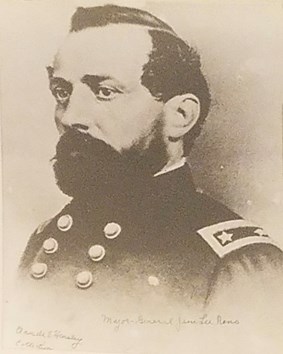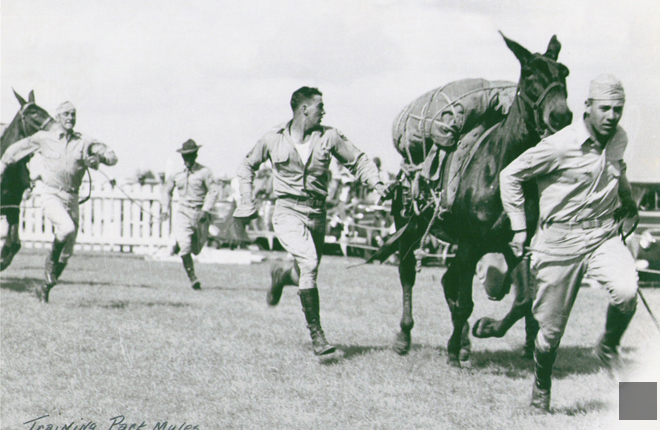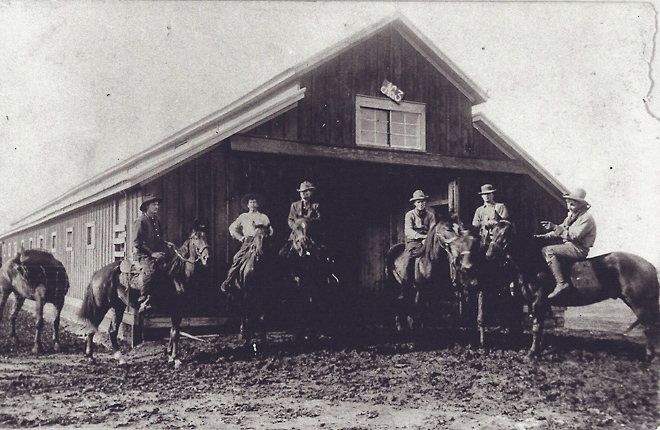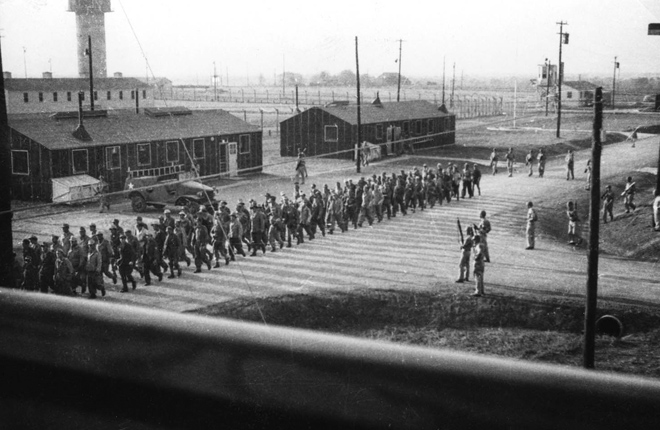Bonus Content: Fort Reno’s Storied Past
 Fort Reno was named in 1875 in honor of Major General Jesse Reno, who died in the Battle of Antietam during the Civil War. (Historic Fort Reno Inc., D3847-1) |
The site of what is now the Agricultural Research Service (ARS) Grazinglands Research Laboratory at Fort Reno (El Reno, Oklahoma) has a long and colorful history. The Southern Cheyenne and Arapaho tribes were moved to a reservation in what is now central Oklahoma in the 1860s. Fort Reno was established near the reservation, and it was later used as a German prisoner-of-war (POW) camp during World War II.
Today, Fort Reno attracts thousands of visitors each year. Past visitors have included Amelia Earhart, Will Rogers, and Frederic Remington. Remington is said to have spent 3 months in residence, using individuals there as inspiration for his depictions of U.S. Cavalry, Buffalo Soldiers, Scouts, and Native Americans.
Historical highlights include:
-
A treaty in 1867 established a reservation for the Southern Cheyenne and Arapaho tribes, and in 1869, an order by President Ulysses S. Grant defined its original boundaries as an area covering approximately 5.1 million acres. The military was assigned to protect and support the reservation.
-
In 1875, the site was named in honor of Major General Jesse Reno, who had been killed in the Battle of Antietam during the Civil War. The first buildings were erected in 1876, and the Fort became a small city with quarters, stables, a commissary, and other structures to support the Cavalry.
-
By the 1880s, the Fort had tree-lined parade grounds, comfortable officer residences, warehouses, barracks, and administrative buildings. The Fort also became instrumental in keeping peace among Native American groups by combatting the illegal invasion of land-hungry settlers into parts of Oklahoma territory.
-
In 1908, Congress established the Fort as a Remount Depot where mules and horses were bred and trained for the U.S. Cavalry and our allies.
-
By 1930, Fort Reno had more than 100 buildings, accommodating more than 800 horses, more than 100 military personnel, and 30 civilian employees. Of the Fort’s 10,000 acres, about 1,250 were used to grow corn and oats, with the remainder in pasture. The Fort’s veterinary hospital was considered one of the best in the nation.
-
During World War II, Fort Reno continued to supply animals for the military, but with the need for horses diminishing, most of them were sold in 1943. The Fort continued to provide mules, which were still required as pack animals in mountainous and remote regions.
-
In 1943, the Fort became a POW camp where several hundred German prisoners were held. A few POWs, who died in captivity at camps in Oklahoma and Texas, are buried in a special section of the Fort Reno cemetery.
More historical information can be found here.
Key Facts
- Fort Reno, in Oklahoma, was a U.S. Cavalry base and a World War II POW camp.
- Fort Reno trained and supplied horses and mules for the military.
- Today, Fort Reno is the site of ARS’s Grazinglands Research Laboratory.
- Fort Reno attracts thousands of visitors each year.
Full Story











